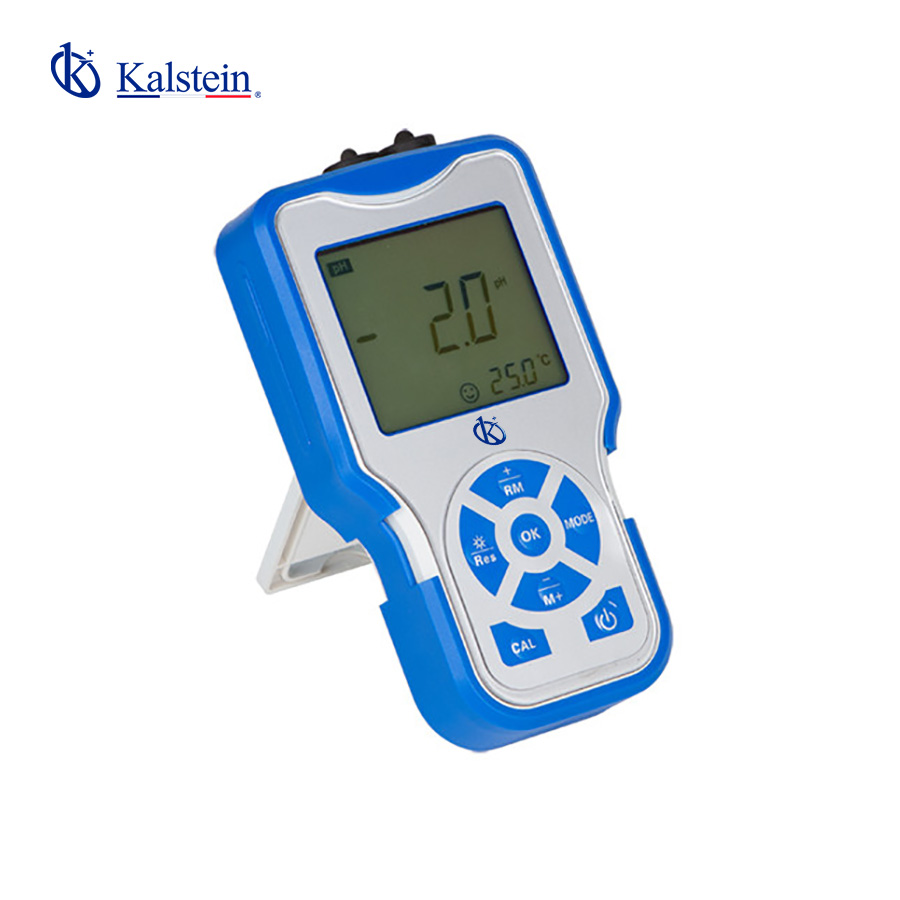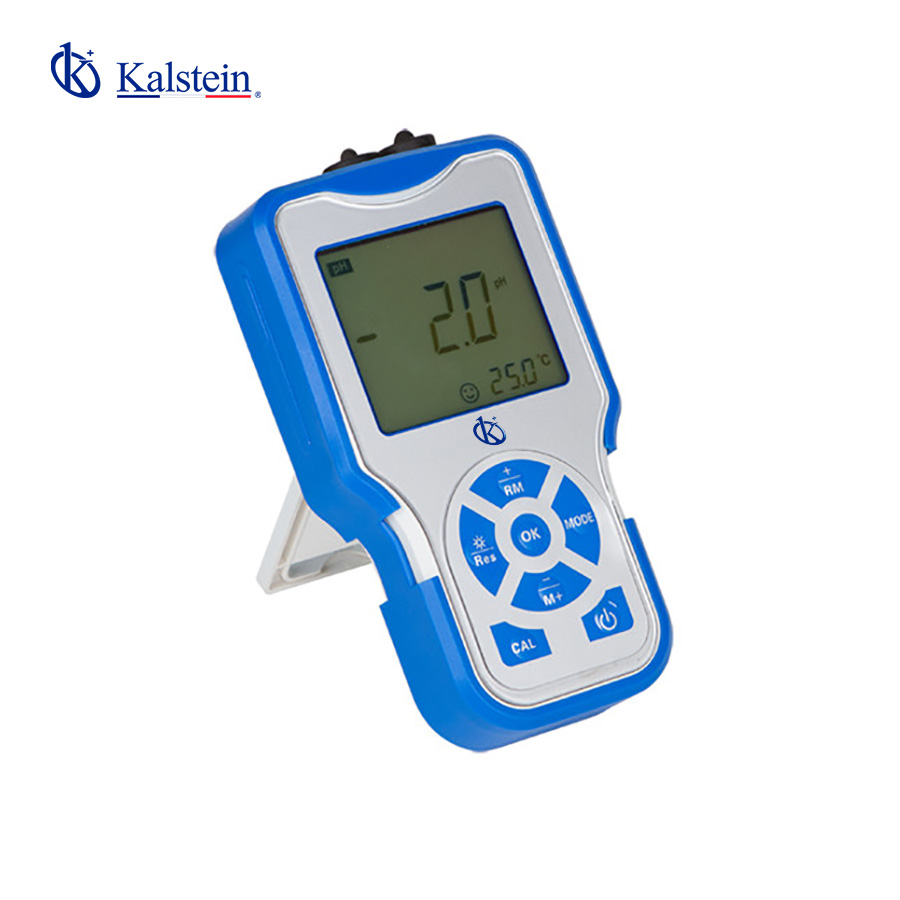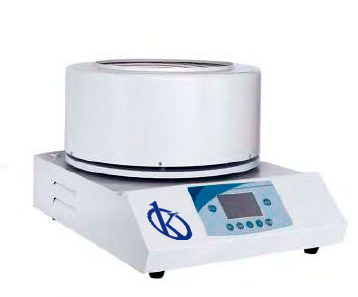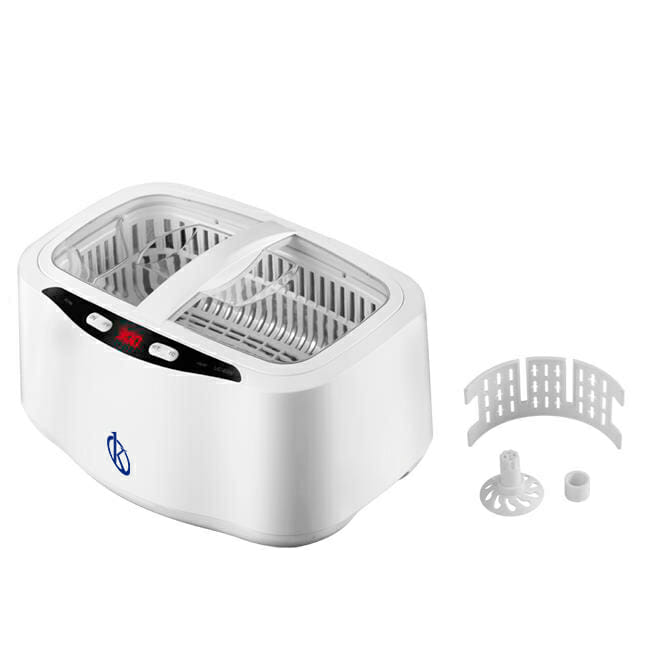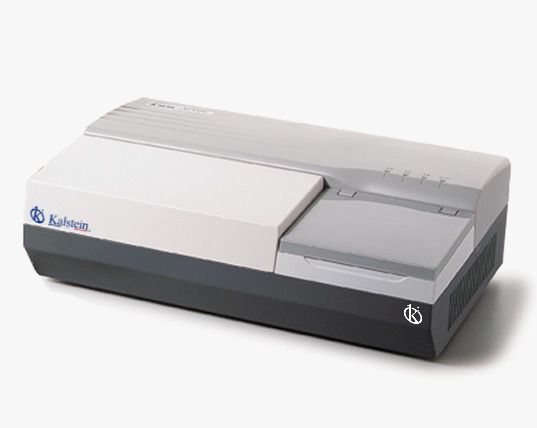Ion Meter
Today’s ion meters are based on the ion-selective electrode technique. These are measuring instruments that have a sensitive membrane capable of measuring ionic activities. That is, they measure the concentration of a given ion in a solution using both a sensing electrode and a reference electrode.The methodology used by ion meters with selective ion electrodes is ion exchange, which measures the potential difference produced by the contact of the electrode with the ion being analyzed.
To carry out the ion measurement, the ion selective electrodes must come into contact with a certain ion present in the solution. Since the main concern of this measurement is the concentration, and not the activity of the ions in the solution, many times salts are used that increase the ionic strength to facilitate the relationship between the potential of the electrode and the concentration.
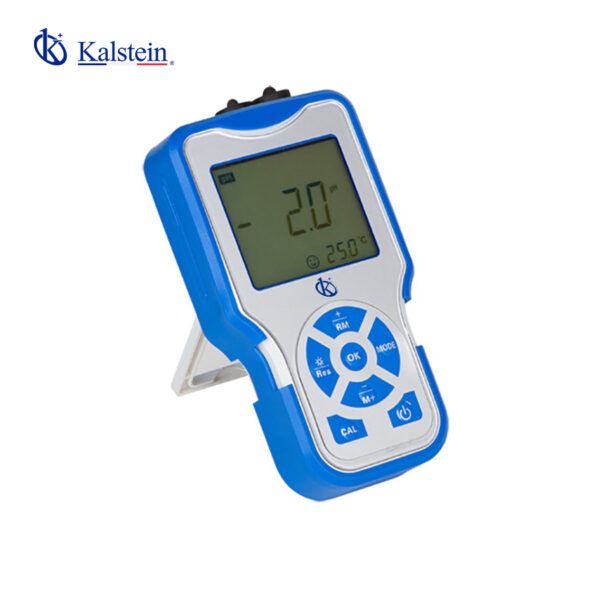
Types of Ion meter Your Laboratory may need
Portátil
Portable ion meters are essential tools for measuring ion concentrations in various samples on the go. These devices offer the convenience of portability without compromising accuracy and precision. Ideal for field research, portable ion meters are compact, lightweight, and easy to use, making them perfect for on-site measurements in laboratories, environmental studies, and industrial applications.
In the ion meters subcategory, portable options provide flexibility and efficiency, allowing users to obtain quick and reliable results wherever they are. With advanced features and user-friendly interfaces, these devices streamline the ion measurement process without sacrificing quality. Whether analyzing water quality, monitoring chemical processes, or conducting research projects, portable ion meters are versatile instruments that cater to diverse needs in the scientific community.
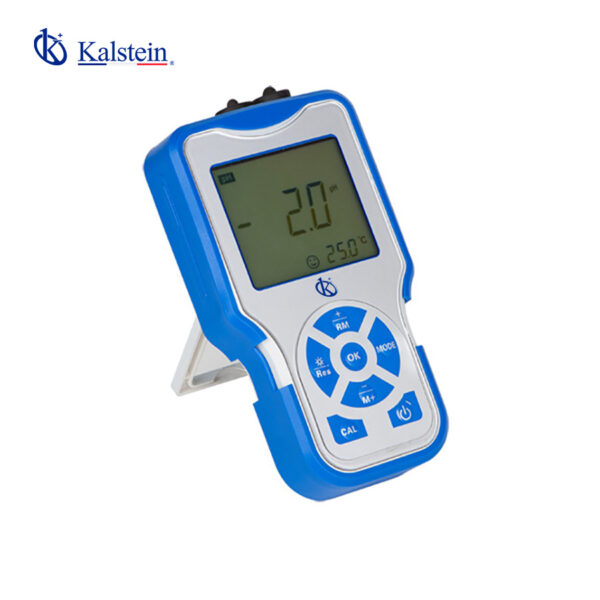
ION METER KALSTEIN
At Kalstein you can find the ideal Ion meter for Your Laboratory

Portable Ion Meter YR01817 // YR01817-15
The Conductivity MeterYR01817This advanced multi-functional meter features a large LCD screen with a controllable white backlight. It includes a built-in microprocessor ch...
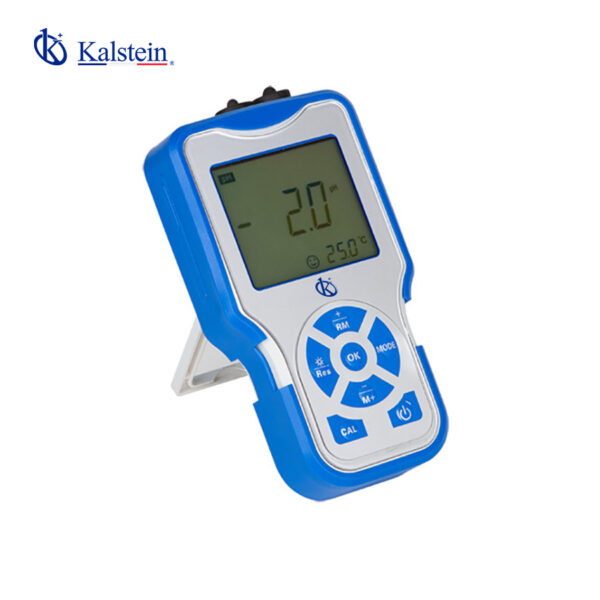
YR01816 Portable pH / Ion Meter
This advanced measurement instrument features a large LCD screen with adjustable white backlight, providing clear visibility in various lighting conditions. Its built-in microprocessor chip offers intellige...
Our Ion Meter best seller
This advanced measurement instrument features a large LCD screen with adjustable white backlight, providing clear visibility in various lighting conditions. Its built-in microprocessor chip offers intelligent functions such as automatic calibration, Automatic Temperature Compensation (ATC), data storage, function settings, self-diagnosis, automatic power-off, and low voltage alert, enhancing operational efficiency and ease of use.
The device automatically recognizes 13 buffer solutions, offering three options: Europe & USA, NIST, and China, ensuring accurate and reliable measurements. It also allows for configurable pH measurement modes, specifically tailored for high-purity water and ammonia-added pure water, catering to specialized testing needs.
Designed for durability and portability, this instrument boasts IP57 grade protection and comes equipped with a sturdy suitcase, making it ideal for outdoor applications and fieldwork.
| Model | YR01816 |
| Measuring range |
(-2.00~19.99)pH, -1999mV~0~1999mV
|
| Resolution |
0.1/0.01 pH, 1mV
|
| Accuracy |
Meter:±0.01pH, Overall: ±0.02pH, ±0.1% FS
|
| Input impendance | ≥1×10^12 Ω |
| Stability | ±0.01 pH/3h |
| Temp. compensation range |
(0~100)°C (Auto/manual)
|
| Measuring range | ±1999.9mV |
| Resolution | 1mV |
| Accuracy | ±0.1% FS |
| Data storage | 200 sets |
| Power |
Two AA batteries (1.5V x2)
|
| Ambient humidity | ≤85% |
| IP grade |
IP57 Dustproof and waterproof
|
|
Meter Kits
|
1) pH meter |
|
2) pH composite electrode
|
|
|
3) Temperature electrode
|
|
|
4) pH buffer solution
|
|
| 5) Suitcase |

Analysis of the best Ion meter for Your Laboratory

The ion meters: what are they used for?
An ion meter is a device used in laboratories and industries to measure the concentration of ions in a solution, by using ion electrodes (ISE) thanks to i...
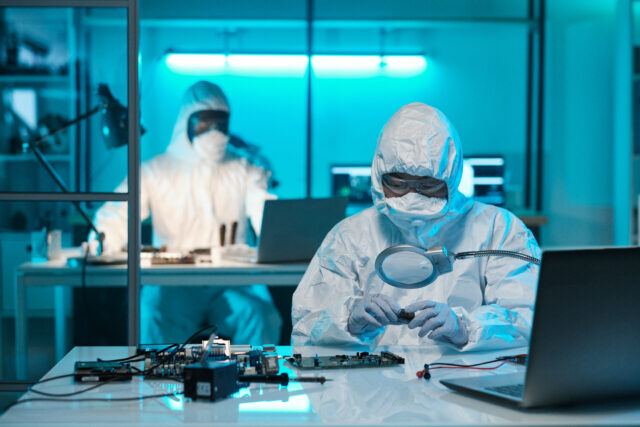
Copper Ion Meters for Pool Disinfection
In recent years the use of chlorine for swimming pool disinfection has been replaced by ionization with copper or with the combination of copper and silver. Th...
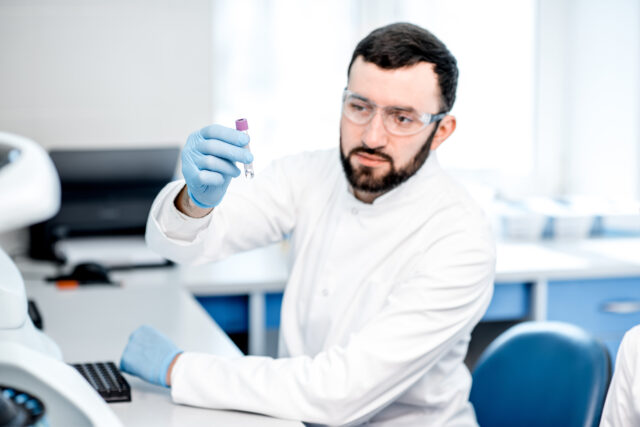
What is the ion meter used for?
The ion meter is a piece of equipment used to detect the concentration or activity of ions in a solution. There are different types of ion meters; some are designed to measure a specific ion. Ion meters a...

Functions of pH Ion Meters in the Cosmetic Industry
In the manufacture of cosmetic products there are three essential aspects that must be addressed, the first, the elaboration of products pleasant to the touch and to t...
Catalog of models of Ion meter on offer
KALSTEIN UPDATED
Guidelines for you to become an expert in Ion meter
The Ion meter equipment are essential products in Your Laboratory, we provide you with guidance and recommendations for a better use, so you can work like an expert.
What are the characteristics of an ion meter?
Food Analysis Using the Potassium Ion Meter
How does a laboratory ion meter work?
Use of Ion Meters for Lead Determination of Samples in the Laboratory

Frequently asked questions from our customers about Ion meter
The delivery time of your Kalstein product will depend on the following:
- Whether the equipment you are interested in is in stock or if it needs to be manufactured.
- The type of freight you have chosen, which can be either air or sea.
- Equipment in stock:
– Delivery Time (Air): 15-30 days.
– Delivery Time (Sea): 45-60 days.
- Equipment not in stock:
– Delivery Time (Air): 30-60 days.
– Delivery Time (Sea): 60-90 days.
You can make your purchase through:
- By email: [email protected]
- By phone: +33 (0) 1 70 39 26 50
- Online shopping: Through the official Kalstein website in your country.
At Kalstein, we provide our customers with inductions and technical support through new online methods. You can visit our induction videos, technical assistance, and guidance provided by a Kalstein team through our Youtube channel (Kalstein English). HERE
Send us a direct message and one of our agents will contact you
Ion meter
Lorem ipsum dolor sit amet, consectetur adipiscing elit. Sed dignissim placerat mauris cursus laoreet. Nam feugiat lacus ex, at fermentum sapien accumsan nec. Curabitur auctor porttitor mi non malesuada. Aenean condimentum, purus vitae rhoncus imperdiet, justo eros aliquam ipsum, at egestas leo diam eget libero.

Catalog of models of Ion meter on offer.
-
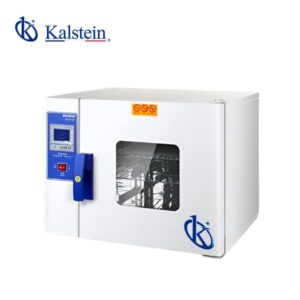
Electric Heating Drying Oven YR06446
-
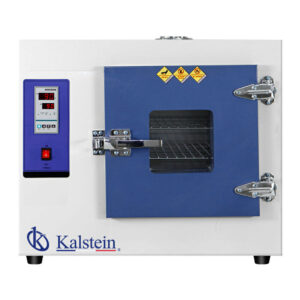
Electric Heating Drying Oven YR05259-2
-
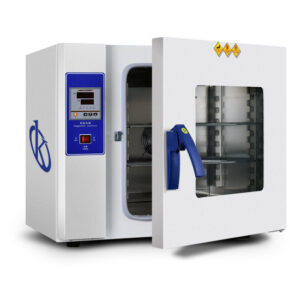
Electric heating drying oven YR05248 // YR05255
This product has multiple variants. The options may be chosen on the product page -
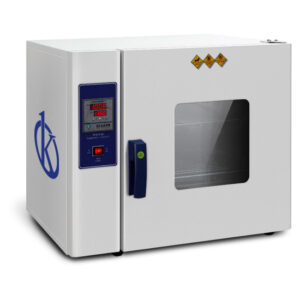
Electric heating drying oven YR05244 // YR05247
This product has multiple variants. The options may be chosen on the product page -

Mini Centrifuge With Large Capacity YR012G
-

Tabletop High Speed Centrifuge YR0137-2 – YR0137-3
This product has multiple variants. The options may be chosen on the product page -
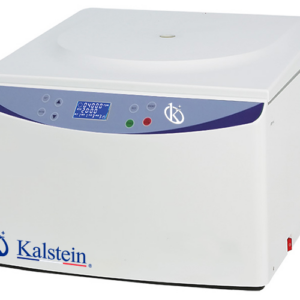
Gel Card Centrifuge YR142-3 – YR142-3-1
This product has multiple variants. The options may be chosen on the product page -
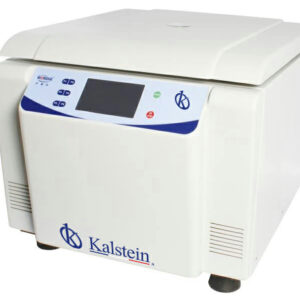
Tabletop High Speed Centrifuge YR019-TG
This product has multiple variants. The options may be chosen on the product page -

Intelligent Electric Wheelchair YR06432
-

Electric Wheelchair YR05445
-

Electric Wheelchair YR05443
-

Electric Wheelchair YR05442
-
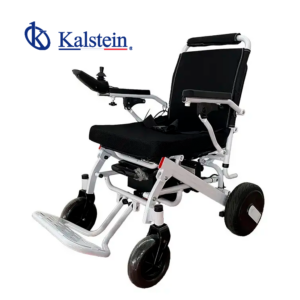
Electric Wheelchair YR05444
-

Electric Wheelchair YR05441
-

Electric Wheelchair YR05440
-

Electric Wheelchair YR05439
Descubre más de nuestro catálogo
Tipos de Ion meter

[Producto] A
Lorem ipsum dolor sit amet, consectetur adipiscing elit. Ut elit tellus, luctus nec ullamcorper mattis, pulvinar dapibus leo.

[Producto] B
Lorem ipsum dolor sit amet, consectetur adipiscing elit. Ut elit tellus, luctus nec ullamcorper mattis, pulvinar dapibus leo.
Find out more about Ion meter with our guides.
Heating Mantles: Uniform Heating and Stirring in Laboratory Processes
In laboratories, achieving uniform heat distribution and constant stirring is essential to obtaining reliable and reproducible results. Heating mantles, designed...
Ultrasonic Cleaner: Deep Cleaning for Laboratory Instruments
In laboratories, cleaning instruments is an essential aspect to ensure accurate results and avoid cross-contamination. In my experience, using an...
Microplate Reader: Accurate Reading of Results in Biochemical Analyses
In research and biochemical analysis laboratories, precision is a crucial factor in ensuring the reliability of results. Microplate readers are...

